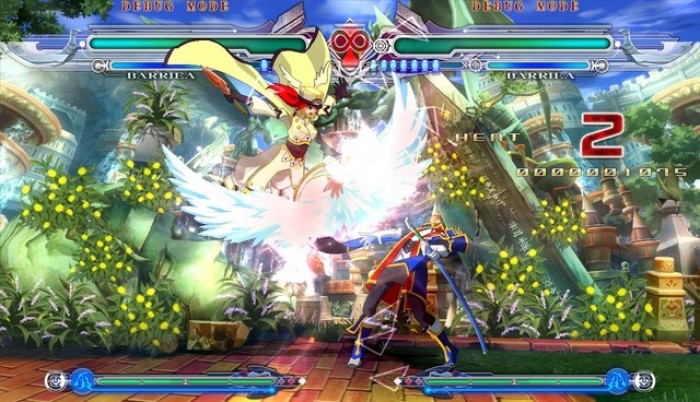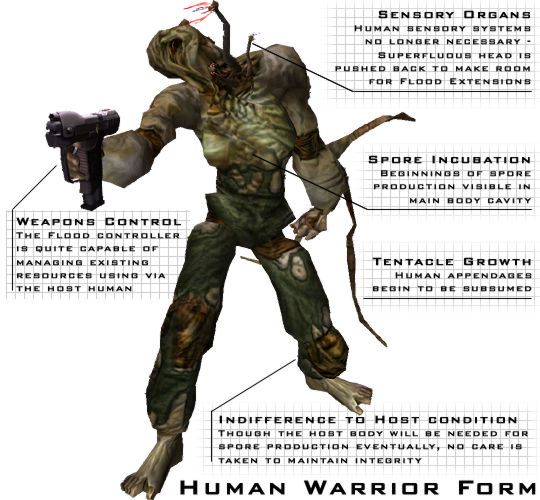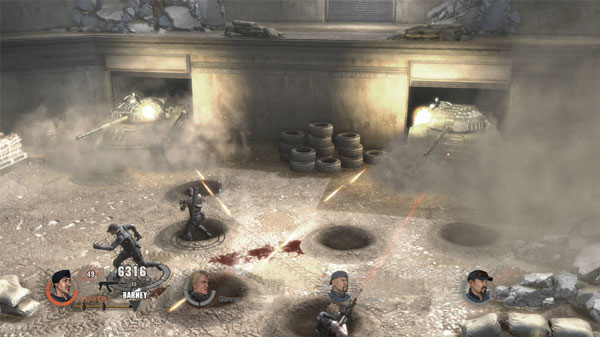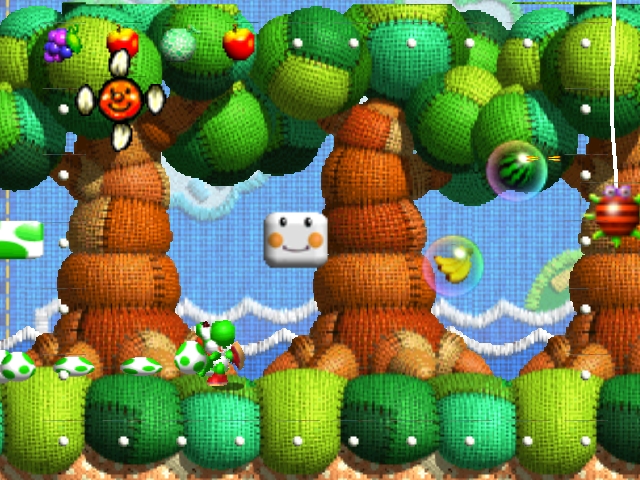There are really a variety of factors being the cause for this and I'll go through them and why I think they are causing a barrier that detracts people from playing a lot of fighting games. For this post I am going to select three different fighting games, all with a variety of different characters and fighiting mechanics to ensure that none of these games play alike. The three games are as follows, Street Fighter 4, Blazblue : Calamity Shift and Tekken Tag Tournament 2.

Reduce your opponent's life gauge to zero to win
First off let's just briefly outline how you win in these games, it's really simple. Reduce your opponent's life gauge to nothing to win a round. Win enough rounds (usually 2 out of 3) to win the entire match. Now this concept is simple enough and no one should have trouble understanding it, the problem comes with the other mechanics in the game.
First off let's talk about some crucial things to learning fighting games to show why it's so hard for people to get into this genre. These are...
1) Fundamentals
2) Movelists
3) Combos
In short, fundamentals are key things that you don't normally think about but do in a fighting games. These aren't normally taught to players by tutorials in game so these are key things that aren't being taught.

Street Fighter 4 - There is more to a fighting game than just using special moves
Movelists are assigned to your character, every character has different moves to choose from with different properties. You need to learn your characters movelist if you want to know what action to do at a certain time. Movelists can range from reasonable to insane depending on the game.

Tekken Tag Tournament 2 - Every character has access to hundreds of different moves

Blazblue - Combos require execution, timing and memorization to do
Fundamentals of Fighting Games
A lot of new games have tried to make an effort to teach the fundamentals of their game but it's a difficult road for new players to learn. For Blazblue and Street Fighter, they share a lot of similar elements because they are both 2D fighters while Tekken being 3D does in fact share elements too.
Spacing

Spacing - Gouki (Right) uses a fireball at a distance that the enemy played would jump in only to get an uppercut to the face
For instance one of the most basic things to learn is spacing, which means your distance relative to your opponent which is important because some characters lend themselves better to close range combat and others at further range. Spacing out your opponent to take advantage of your character's movelist is a large versus your opponent's character's movelist becomes part of the "mindgames" that come in the matches. Knowing when to throw a fireball based on the distant to your opponent, to make sure they can jump over and kick is an unspoken rule but its there. The problem with this is, no tutorial in any of these games actually teaches you the fundamentals of spacing and this IS one of the most important parts of fighting games. Everyone pretty much has to figure it out for themselves or look online which is just meant more time researching instead of learning hands on. Not too beginner friendly.
Footsies

SF4 - Fei Long (Right side) uses a fierce punch, hitting at max range. A demonstration of footsies or "poking".
Another important fundamental is footsies, which lends itself to spacing. Footsies basically means "poking" at your opponents with moves that ensure you can keep the distance you want relative to the opponent and deal damage. These are important in pretty much all fighting games. Again the problem is that these aren't really taught in tutorials either. I don't know why fighting games neglect to include this in tutorials but this is another very important concept that I never learned without looking online.
Punishing

Ken (On the right) Uses a very slow attack that takes a while to recover. Ryu can then "punish" it with an attack as result.
Punishes are another important concept, which means to punish an opponents move that either misses or simply takes too long recover from the animation. This has been taught in a very well done manner in Tekken Tag Tournament 2 but the other games I have not seen it being taught. This is really important to learn as well and the problem is to learn how to punish, you need to know how the opponent's character you're facing works. This involves a lot of technical mumbo jumbo of frame data and such that really makes it hard for newcomers and even experience players to learn. This is something that though simple, takes a ton of dedication for any player which can seriously deter casual players.
Mix-Ups

Mix-Ups means to alternate between attacks that force opponent to defend themselves in different ways.
Mix-Ups is another technique that was actually taught in the tutorials for these games (except Street Fighter 4). Basically when characters block an attack, they have two options, block high or low. Moves can be counted as either overhead or low. Lows block lows and high blocks can stop overheads. It's a pretty simple concept in practice but hard to execute in real time without lots of practice. You also have to do it without looking to obvious or you'd get predicable.
There are honestly a ton of other fundementals but I've covered more than enough to show how complex a fighting game system can be. This is NOT an easy system to get a hold of and the fact that a lot of fighting games still have yet to officially teach these concepts in a tutorial makes it really daunting for new players to get into.
Movelists
You have a lot of characters in a fighting game, sometimes its around 12, sometimes around 50. And every character in the game has a different set of moves with different properties and special attributes. That could be throwing a fireball or doing an uppercut to lay the hurt on opponents in the air. It's really a lot to remember and you're going to have to learn to combine together to form combos if you want to do any real damage. Let's quickly take a look at how Street Fighter 4 handles these.

SF4 - Ryu using his Ultra Combo, dealing tons of damage
Street Fighter 4 handles move lists fairly well. You have a movelist that doesn't seem to be too large or overly burdening. It can still be a lot to remember but it's organized well and not too complicated. The moves themselves take some getting used to. The quarter circle motion for a fireball is a lot easier to do than it used to be in Street Fighter 2, meaning that these games are trying to appeal more to the casual audience. The problem comes when combining these in combos or trying to apply fundamentals such as spacing and footsies. Still that can be considered more "advanced" stuff but if you want to even think about becoming good, you need to learn those fundamentals.
Blazblue is in a similar boat to Street Fighter 4, with a lot of moves still but not an overbearing amount. The tutorials also teach you how to use these.

TTT2 - Characters have a lot of moves but none are specified as "special moves"
Tekken on the otherhand suffers greatly on the topic of movelists. The game has pretty much 100 different "moves" for a character and they don't even give you any recommended moves to use. They don't even have a tutorial for each character to teach you how to use these moves as well, its all in practice mode. This is one of the greatest oversights the game has and it makes it extremely difficult for even an experienced player to get the grasps of a character. For beginners I can't even imagine how hard it is.
The problem in general is movelists don't ever tell you why you'd use a certain move. They don't say "This is a fireball move, use it for spacing" or "This move has invincibility temporarily, use it to counter moves" you have to go through the entire movelist and figure it out for yourself. Learning this stuff for new players is a lot of work.
Combos
Combos have been a basic feature in pretty much all fighting games since Street Fighter 2 first came out. They used to be much simpler but still restricted to certain timing and were difficult to pull off. Nowadays, combos come in all sorts of flavors and the methods to do this in each fighting game is different from the other. Let's start off with Street Fighter 4.
SF4 - Ryu Trial mode and combos
This is probably the best example of a game that provides simplicity with depth. Combos in this game are actually taught through a mode called trial mode, where set combos are provided and you're allowed to attempt these while seeing all the inputs necessary. Every character has their own trial mode and since every character's moves have different properties then they all have different timing and move combinations to make different combos which makes this mode necessary.
The problem with this mode is that they don't show you the proper timing or even provide a "demo" of the combo being done for you. This means you pretty much have to experiment by yourself to find out the timing for the combo. This can become very frustrating to new players since when going into a fighting game, you don't have much sense of timing. Though they show you the combos, it pretty much becomes trial and error to learn. Some even require one frame (1/60th of a second) to chain a combo. Some very basic combos can still be achieved through button mashing and still aren't too difficult but it can still take a fairly long time for new players to learn these. Street Fighter 4 still nevertheless contains a good way for players to learn combos.
Blazblue - Challenge mode for Ragna
In Blazblue, combos are in general much longer and more complex than Street Fighter 4. You combine knocking your opponents all over the air and your hit count in a combo soars into the double digits easily. The mechanics to Blazblue are entirely different and have different timing and properties to combos such as ground bounces that make them it so that any combos you might learn in a different fighting game won't help you here or at least not as much as you'd hope. Thankfully they also contain a trial mode for each character similar to Street Fighter 4 and even provide a demo reel for you to see the timing and learn it. Basic combos with more hits are in general easier to do in Blazblue than Street Fighter.
TTT2 - Fight Lab
Tekken Tag Tournament 2 and it's predecessors are in 3D arenas and have combos that are way different than Blazblue or Street Fighter. The problem with Tekken is that unlike those two games, combos aren't even taught through a trial mode for characters. Tekken Tag 2 recently had a "fight lab" mode which taught you the basics of the game (and some fighting game fundamentals) and some combos, however any character specific combos have to be learned entirely through trial and error or looking up videos. For the game not to include this is not very beginner friendly so the process to picking up any character in this game is very difficult.
Combos in general can take a long time to learn for new players because they have to get used to a lot of different gameplay elements still. It's not like in a shooter where the basic knowledge of where to aim and use corners is quite a bit easier to grasp. There is a lot of memorization to be had with combos which can really be offsetting to new players.
Fighting Games require commitment
Fighting games are a daunting task to get into, because there is a certain level of commitment this genre needs more so than other genres I have played with. I myself have a few friends who have tried fighting games but never got into it because either A), they think its button mashing which its not, or B) Upon figuring its not button mashing looks way too complicated for them to figure out and really get into. They don't play one more than one fighting game and even if they do, it's not very often.
TTT2 - Combo video, these aren't easy to do and takes a while to do in training mode let alone in a real match
The fact that a lot of fighting games don't have a good story means that you usually buy a fighting game for the fighting system and multiplayer, not anything else. A lot of fighting games recently have been lacking in single player content (not counting Blazblue and Persona 4 Arena or Mortal Kombat recently). So the problem lies in the fact that you have to spend a lot of time to get good in these games because of course you play to win. There is no fun in getting obliterated by someone miles better than you and beating computer opponents only has so much appeal. To enjoy these games you need to fight real people, which means you really have to get into the system and learn the fundamentals. If you don't you could end up losing, getting frustrated and just giving up.
SF4 - Daigo and Justin Wong are top tier players who spend most of their time playing fighting games. This can be seen in their grasp of everything about the genre.
That's the barrier this genre faces. It needs the deep mechanics, fundamentals and movesets present right now to keep it's core audience because that's what fighting game fanatics go for. But how do they get new players in while keeping the same tournament level style of play.
Accessibility has been improving
I may have been stating how hard it is for newcomers to get in due to all those factors but companies have been working hard to get people into the genre.
For one there has been an "easy button" mode implemented into Blazblue as well as Marvel vs Capcom 3. This basically makes all the special moves easier to execute, not requiring quarter circle motions or full circle motions and what not. This definetely makes it easier for the new players to get the hand on the basics as they dont have to worry so much on the execution of moves. These modes are however limited and don't allow you to access the full move list of your character. This type of control has been implemented as earlier as 2001 in Capcom vs SNK 2.

Blazblue - With easy mode, even basic moves turn into special moves and can turn into combos easily
As previously mentioned, there have been more tutorials for combos and some of the basic fundamentals (though not all of them) featured in some games. The game Skullgirls recently featured a rather broad tutorial and taught a lot of the fundamentals as well as the game's own systems thoroughly though it had no trials. Other games like Tekken Tag 2 have not shown all its systems in it's tutorials. If games could teach the fundamentals of the genre more like Skullgirl's tutorial, then a lot more of them would be appealing and accessible to audiences. If they can combine Skullgirl's tutorial along with teaching you at least the basics of how to use a specific character, then it goes a long way to teaching players how to get into the game.
Skullgirl's Extensive Tutorial
Conclusion - How do we make it easier for new players?
In short the problem is there are a whole cluster of things for new players to do, learning movelists, characters, combos, important fundamentals, with usually only a few of these things actually being taught. Fighting games are daunting there is no question about it, which is why new players need the game to help them. Sure they can look online if they are passionate about learning but you want to make sure the game itself is helping right there. Its so much easier to do a tutorial in game than to look at a video online.
But if you can make a person really enjoy a fighter, get into the system and learn the fundamentals, you have to get a hold of their attention for not only the sequels to that fighter, but other fighters in the scene as well. If you learn Tekken 6 for example, you can easily get right back into Tekken Tag Tournament 2. Even your fundamental understanding of spacing and what not will transfer to Street Fighter despite the different mechanics of the games. That's what fighting games have to do if they want to hook people in. Make it as easy as possible and add in the depth of the game's systems and fighting game fundamentals as they go through tutorials (fun tutorials that is). The more a game guides a newbie's hand, the easier it will be for them to get in.



















































